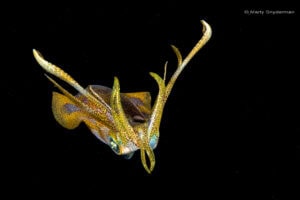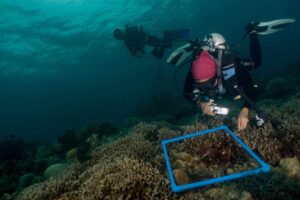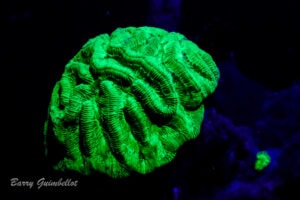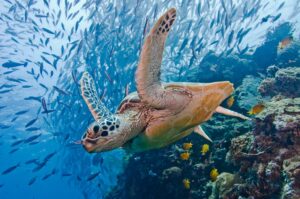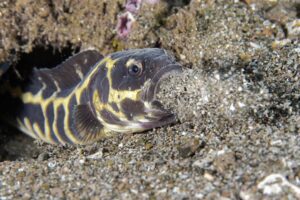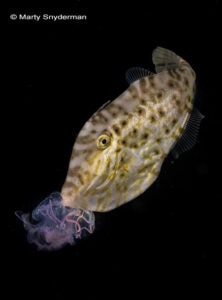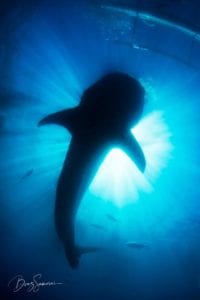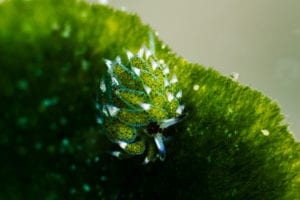Being located in the heart of the Coral Triangle, a marine area that boasts of more than 500 species of reef-building hard corals, north of 2,000 species of fishes, and seven of the world’s eight species of sea turtles, there is no question that the reefs surrounding the Atlantis resorts in Puerto Galera and Dumaguete along with those visited by our liveaboard, the Azores, teem with life. It only takes one morning dive the first day of a trip to realize this truth. But if you only dive during the day, you will miss out on some encounters with a mix of fascinating creatures.
While divers’ eyes are usually scouring the sea floor during night dives, one of the favorite species for divemasters to point out inhabits the water column. It is the bigfin (aka longfin) reef squid. Equipped with fins that extend for the length of the body, these cephalopods are easy to identify. Unlike many squids that inhabit the waters of the open sea, bigfin reef squid typically inhabit shallow, coastal areas. Sometimes they are wary of bright dive lights, but at other times they appear to be curious about divers and as they remain relatively still when a dive light is shined on them. When you get a good look, you cannot help but be amazed at how these squid can quickly alter the colors and patterns on their skin in dazzling displays by using specialized pigmented cells in their skin (chromatophores).
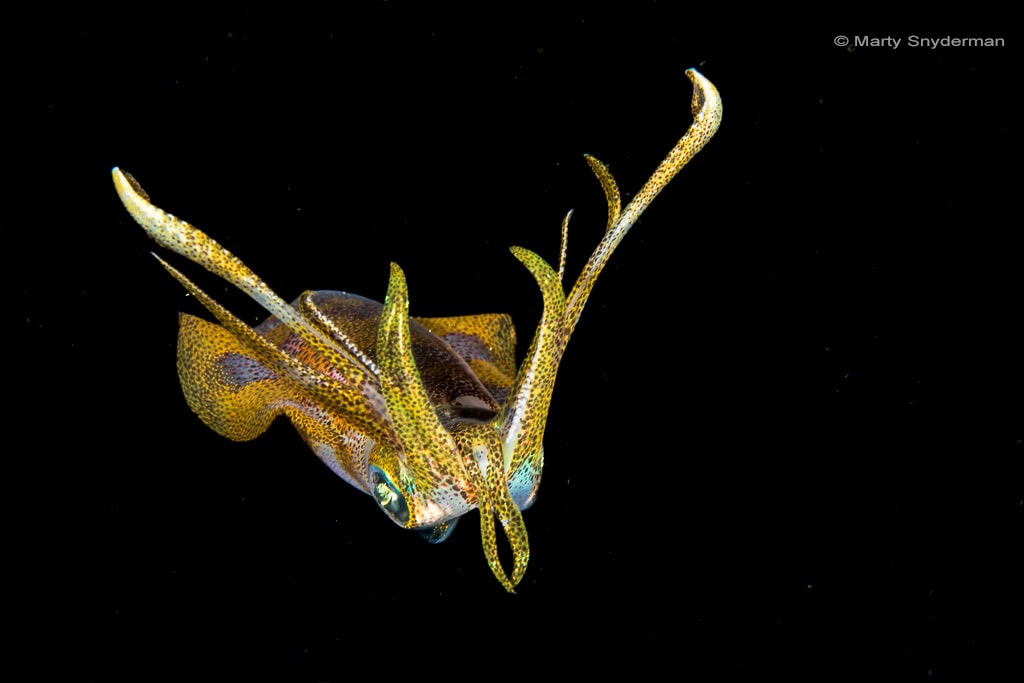
Another nighttime delight is the bottom dwelling bobtail squid. The stubby body of these jewels is only about one inch (2.54 cm) long. They tend to sit motionless on or partially buried in the sand while waiting to ambush their prey, so it can be challenging to find them on your own the first time. But our divemasters are adept critter spotters. In addition to the “cuteness” factor of bobtail squid, their symbiotic relationship with a species of bioluminescent bacteria makes them especially interesting. Bobtails are equipped with a specialized light organ where the bacteria are found and create light through a chemical reaction. The bacteria helps the squid match varying amounts of moonlight and aids both in camouflage and their ability to rapidly alter the color, pattern, and texture of their skin.
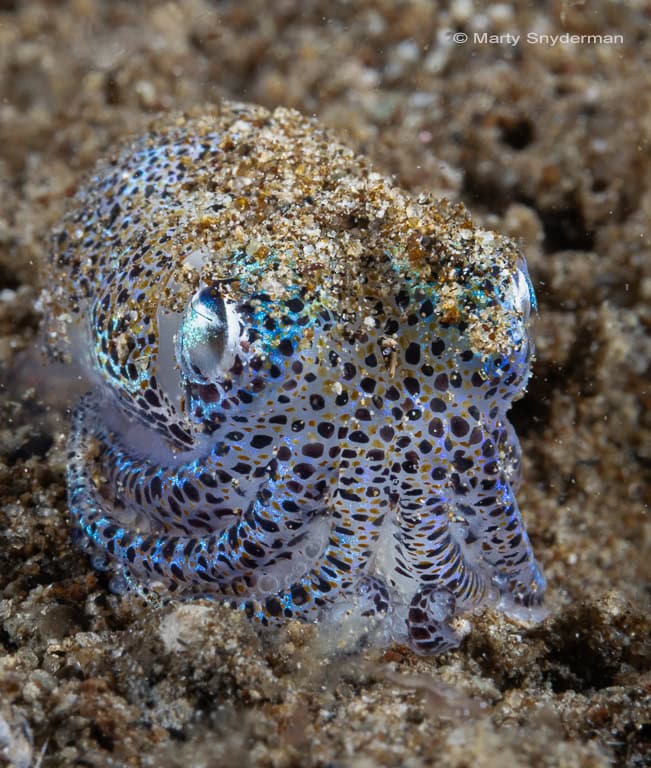
Of course, squids are not the only highlights after sunset. The crustacean known as the anemone hermit crab, a hairy shell-dweller that lives on the sea floor and places anemones on its shell to use for camouflage and defense as their stinging cells can fend off potential predators.

Relatively large gastropods called bat volutes
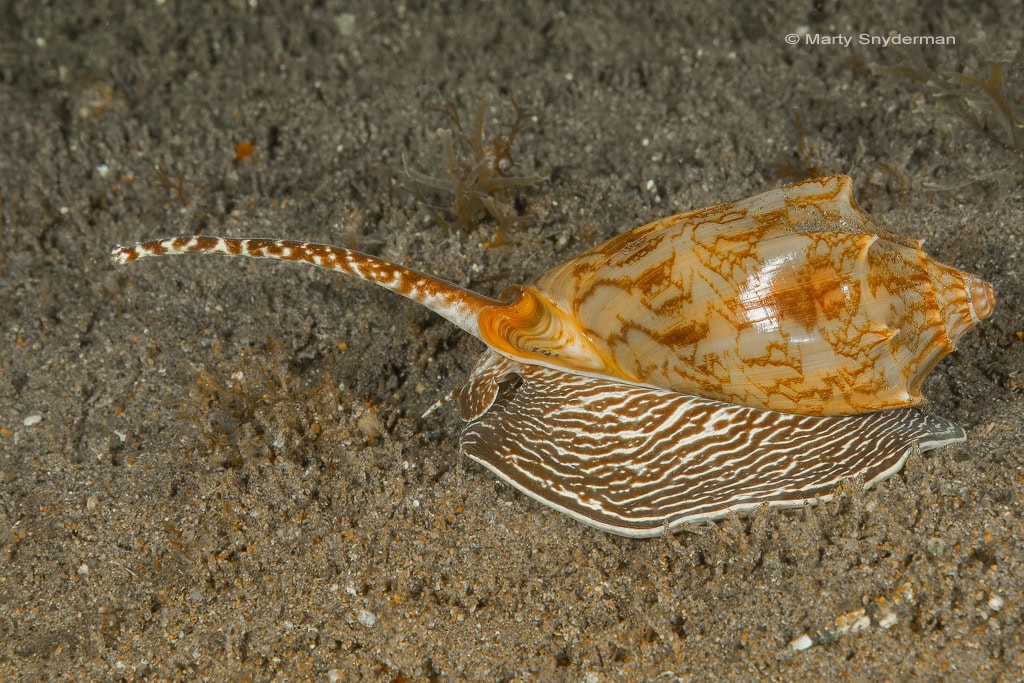
and smaller bonnet snails can sometimes be spotted making their way across sandy bottoms in the dark of night. Almost never seen during the day because they bury themselves in the sand, these predatory mollusks emerge at night to seek their prey.

Fishes such as stargazers are also seen much more often at night. Bizarre-looking ambush predators that have both eyes located on the top of their head, stargazers wait for unsuspecting prey to venture into their strike zone. When that happens, they explode out of the sand and ensnare their prey. Then the hunters settle back down into the sand and bury themselves once again as they consume their victim and await the next one. Very cool, unless you are a small fish that is unaware of the presence of these very capable hunters.
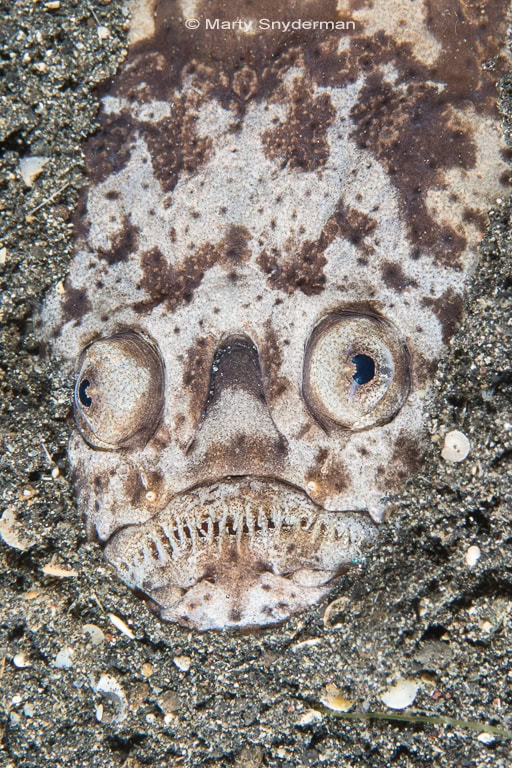
Devil scorpionfish are another fish that is often seen on night dives. While some individuals are drably colored, others are bright orange or red, making them striking subjects for photographers and videographers. Predators that often bury in sand or hide in the latticework of reefs during the day, they emerge at night to seek their prey of other fishes, mollusks, and crustaceans.
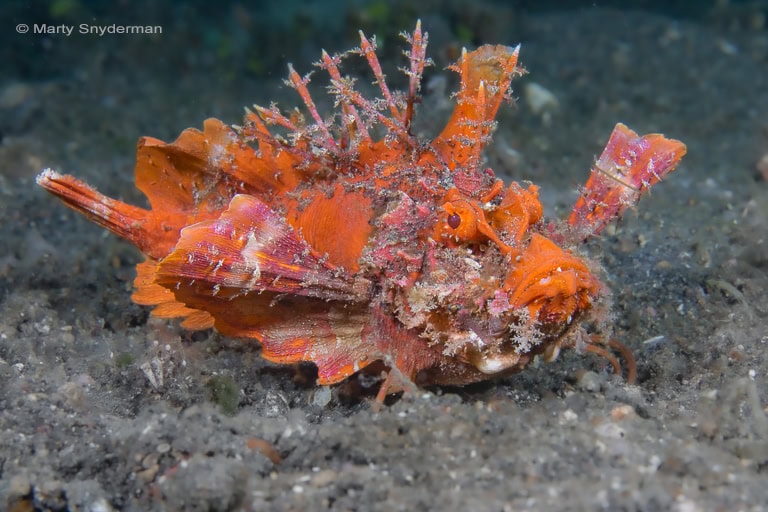
A variety of snake eels can often be found by eagle-eyed night divers. During the day a few inches of the head and body of a snake eel can sometimes be seen in areas where the sea floor is comprised of sand or rubble. This often produces the impression that snake eels are much shorter than they actually are.
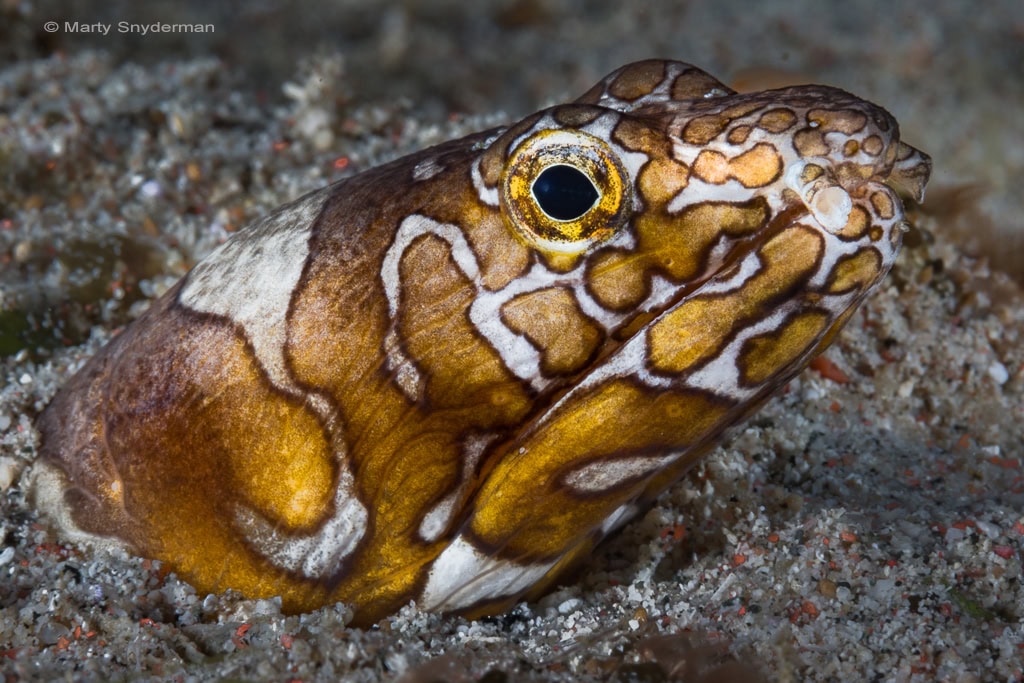

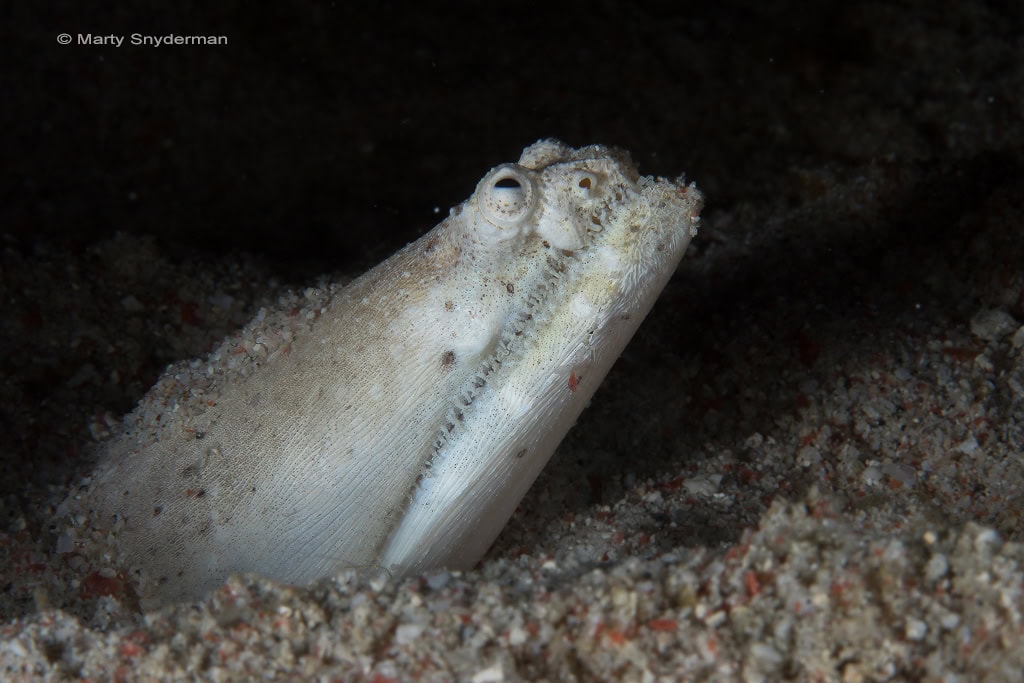
At night when they emerge to seek their prey of small fishes, some mollusks, and crustaceans, it can come as quite a surprise to see that many snake eels like this black-finned snake eel are two feet long (30 cm) or longer.

I could go on and on writing about magical nighttime encounters with nudibranchs like the brilliantly colored bright red to orangish Spanish dancer, the world’s largest “nudi” (up to two feet or 60 cm in length) and a variety of lionfishes that are often seen at night.

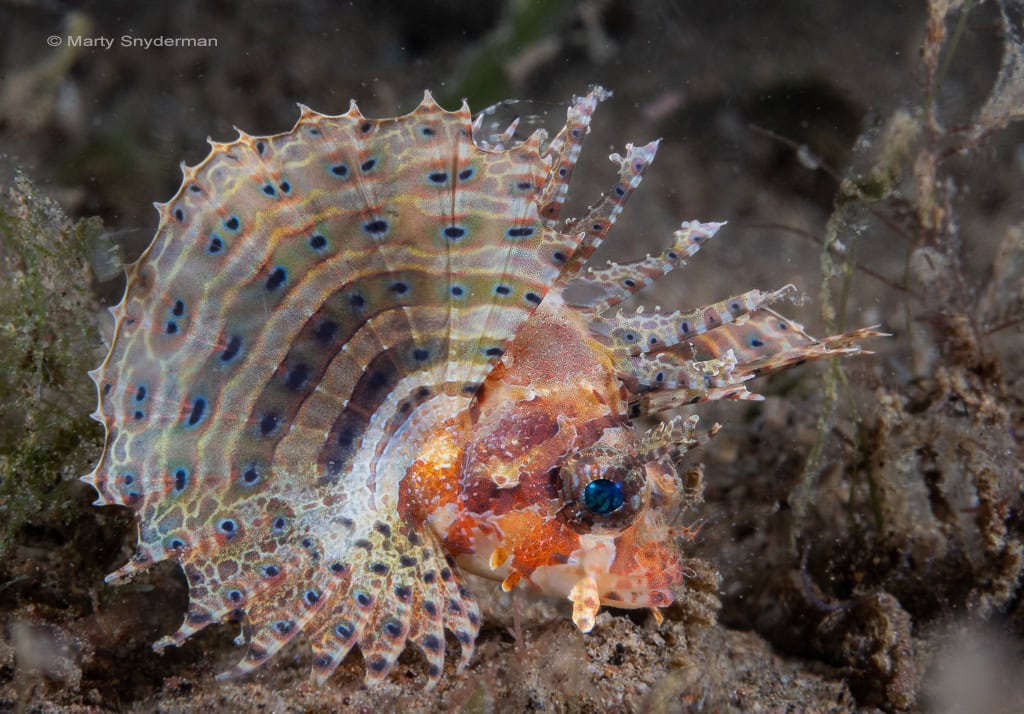
But I assure you, it is a lot more fun to see these and many other creatures of the night for yourself than it is to read about them. All it takes is making some night dives when you visit us because it is as clear as day that nighttime is the right time for bottom time.


